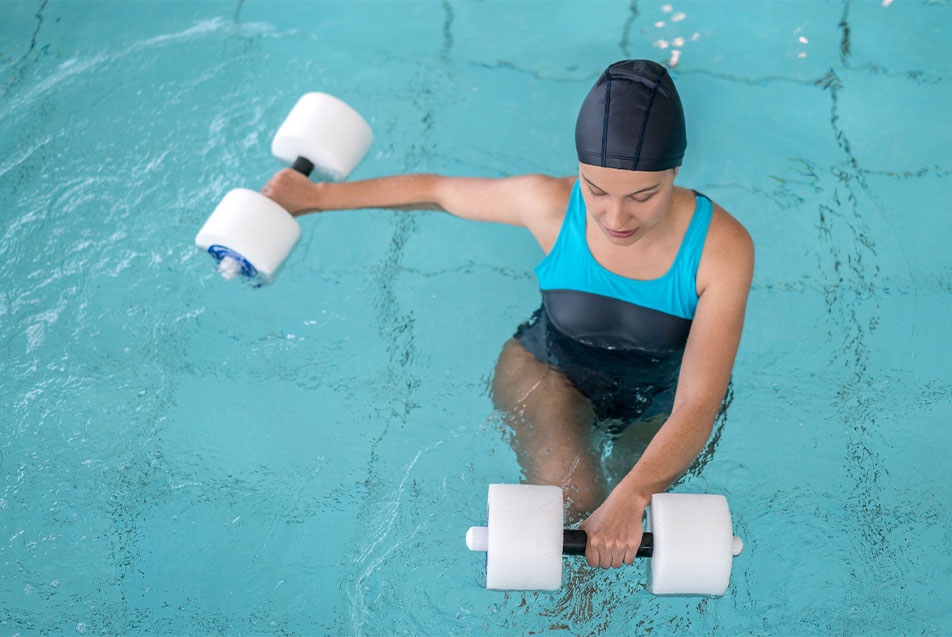
One of the most unique ways Parkview TherapyONE treats orthopedic pain is through aquatic therapy. Water-based physical therapy offers benefits that are hard to replicate through traditional methods. Erika Vanengen, PT, DPT, OCS, COMT, CSCS, rehab therapy manager, Parkview TherapyONE, answered some common questions regarding aquatic therapy and explained why it’s such a game changer for many patients.
What makes aquatic therapy so beneficial?
Water provides buoyancy, which reduces the strain, weight and impact on painful bones and joints. Where certain exercises may be too difficult or too painful on land, performing those same exercises in the water is often less painful and better for the body. If your condition or injury makes it difficult to perform your rehabilitation on land, aquatic therapy may be the perfect way for you to recover in a more comfortable, healthy way.
Rehabilitating in the water also allows patients to increase their range of motion without aggressive stretching, as the water again provides buoyancy and support. It also causes your body to stabilize and support itself, which builds the core strength that’s essential for getting healthy.
For many patients, aquatic therapy just feels good! The warmth of the water and water pressure often desensitizes nerves and painful muscles, and may reduce swelling as well.
Ultimately, aquatic therapy helps patients improve strength, balance and flexibility in a more comfortable environment.
What conditions are treated through aquatic therapy?
- Rheumatoid arthritis: This chronic, inflammatory disease causes painful swelling in the joints. Traditional physical therapy may be painful for those dealing with rheumatoid arthritis, but the warm, buoyant environment of aquatic therapy may reduce the inflammation in those joints and allows you to rehabilitate properly.
- Chronic pain: There are many causes of chronic pain, such as fibromyalgia, but aquatic therapy is an effective treatment for unrelenting pain in the knees, wrists and other joints, as the warmth and support of the water can soothe the affected areas.
- Lower back pain: Many people deal with constant pain or pressure in the lower back. One of the ways we can treat pain in this area is through aquatic therapy, which decreases the weight and strain of daily exercises. Forcing the body to support and stabilize itself in water also builds the core strength patients may lack and accelerates recovery.
What does an aquatic therapy session entail?
Typical aquatic therapy sessions last around 45 minutes. There are a variety of exercises that we’ll perform, depending on your condition, your capabilities and your rehabilitative needs. These may include:
- Functional movements and positions like squatting, lunges, step ups, reaching, pushing and pulling
- Balance activities, such as standing on one leg and performing other body movements
- Multi-directional walking with a focus on balance and core stability
- Use of the aquacycle, a bike that is fully immersed in the water
- Use of specialized equipment, such as kickboards or weights, to provide assistance or resistance during different movements.
Parkview TherapyONE offers this unique treatment under the supervision of aquatic therapy-certified physical therapists at the southwest Fort Wayne location.



